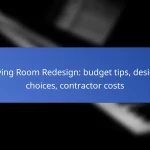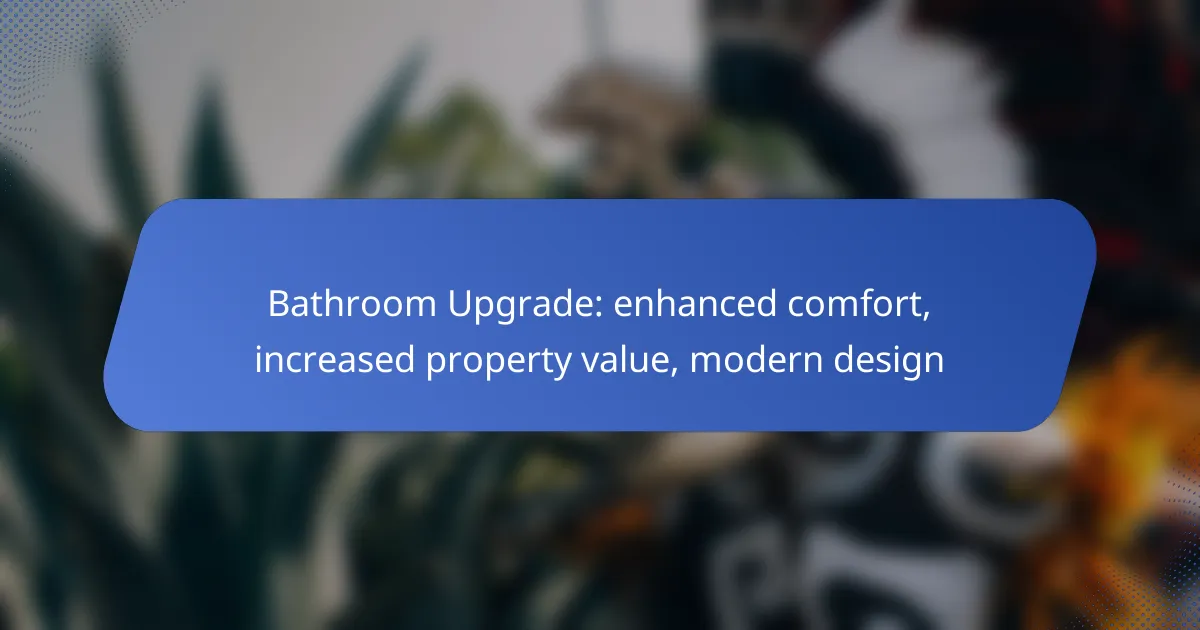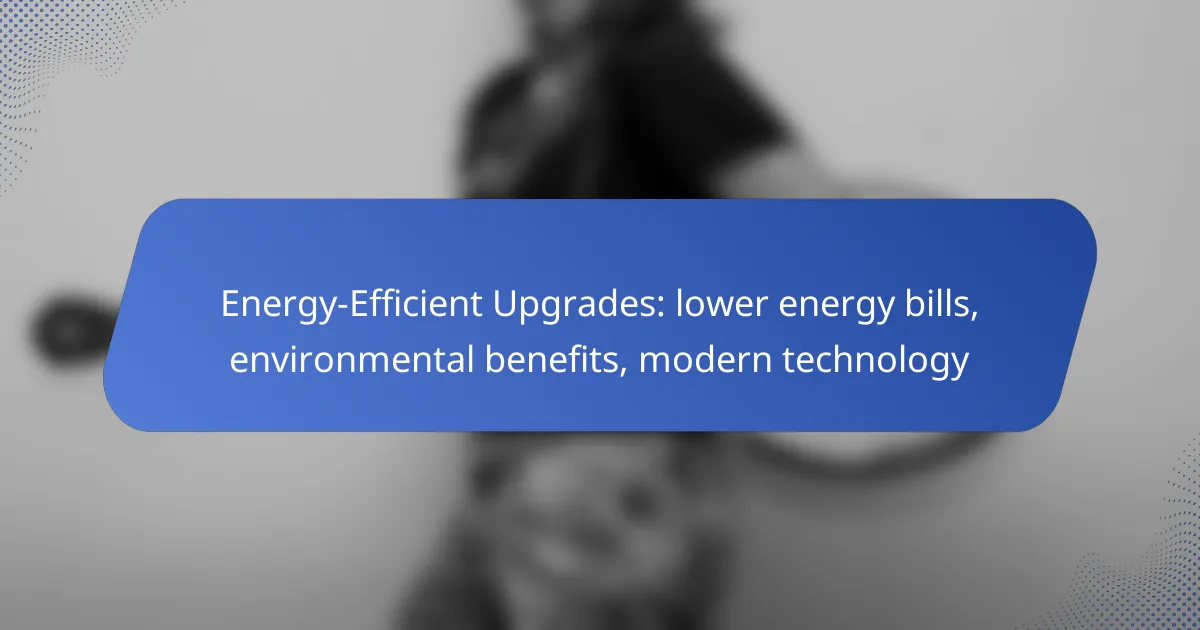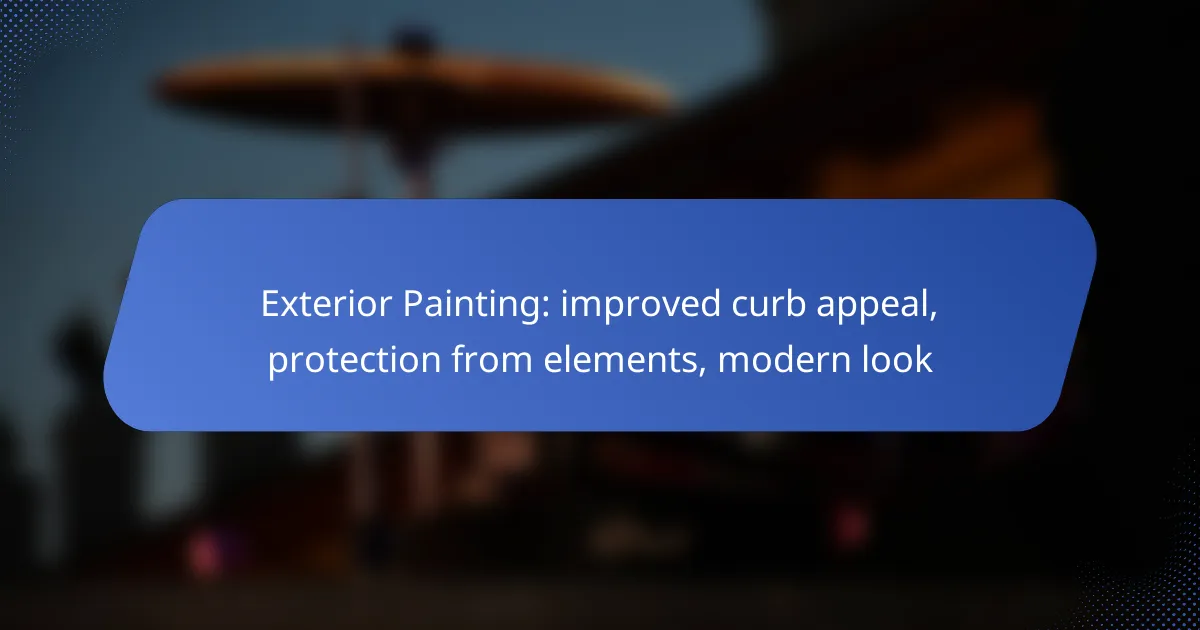Upgrading your bathroom can greatly enhance comfort and elevate the overall aesthetic of your home. By incorporating modern amenities and thoughtful design elements, you can create a relaxing retreat that not only improves daily living but also increases property value. Embracing current design trends, such as minimalist aesthetics and smart technology, ensures your bathroom remains both functional and appealing to potential buyers.
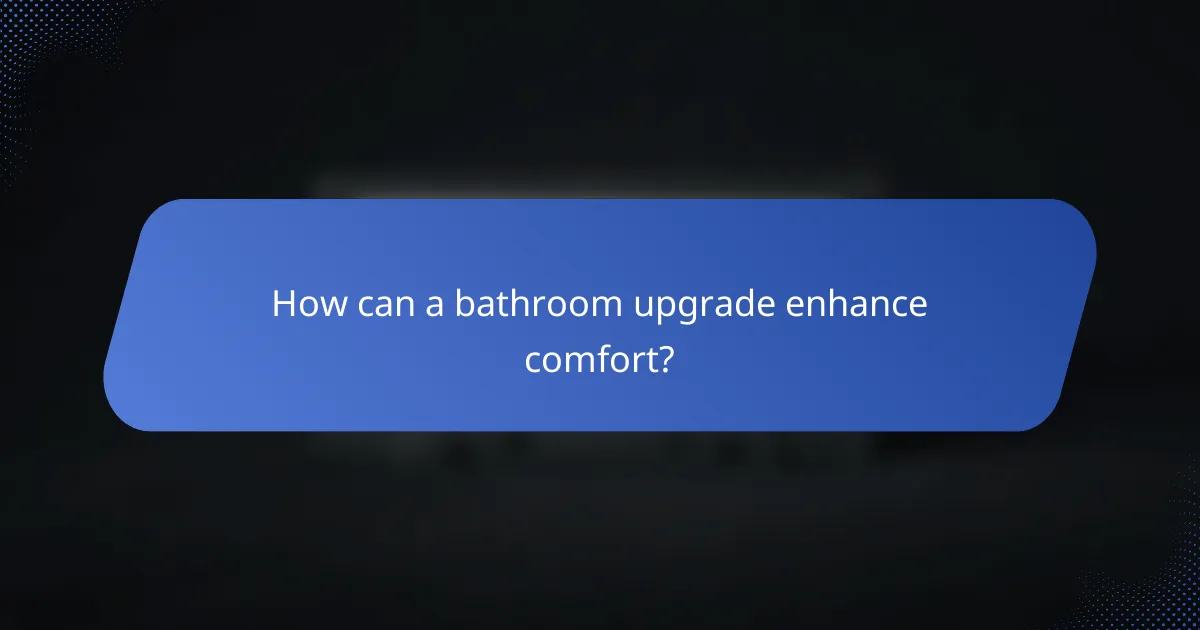
How can a bathroom upgrade enhance comfort?
A bathroom upgrade can significantly enhance comfort by introducing modern amenities and thoughtful design elements. Improvements in fixtures, heating, and ergonomics can transform a basic bathroom into a relaxing retreat.
Improved fixtures and fittings
Upgrading to high-quality fixtures and fittings can elevate both the functionality and aesthetics of your bathroom. Consider installing water-efficient faucets and showerheads that provide a luxurious experience while conserving water.
Choose durable materials like stainless steel or ceramic for longevity and ease of maintenance. A well-selected vanity with ample storage can also help keep the space organized and clutter-free.
Heated flooring options
Heated flooring is a popular upgrade that adds a touch of luxury and comfort, especially in colder climates. Electric or hydronic systems can be installed beneath tiles or stone, providing consistent warmth throughout the space.
When considering heated flooring, evaluate the installation costs and energy efficiency. Systems can range from a few hundred to several thousand dollars, but the comfort they provide during winter months is often worth the investment.
Ergonomic design elements
Incorporating ergonomic design elements can greatly enhance comfort in your bathroom. Features like adjustable showerheads, grab bars, and non-slip flooring can make the space safer and more user-friendly.
Consider the height of sinks and countertops to accommodate users of different heights, ensuring accessibility for everyone. Simple adjustments can lead to a more enjoyable and functional bathroom experience.

What are the best modern design trends for bathrooms in the UK?
The best modern design trends for bathrooms in the UK focus on creating a balance between aesthetics, functionality, and sustainability. Key trends include minimalist aesthetics, smart technology integration, and the use of natural materials, all of which enhance comfort and increase property value.
Minimalist aesthetics
Minimalist aesthetics prioritize simplicity and clean lines, making bathrooms feel more spacious and organized. This trend often features neutral color palettes, uncluttered surfaces, and hidden storage solutions to maintain a serene environment.
To achieve a minimalist look, consider using wall-mounted fixtures and large-format tiles that reduce grout lines. Aim for a cohesive design by selecting a limited number of materials and finishes, which can create a harmonious space that feels both modern and timeless.
Smart technology integration
Smart technology integration in bathrooms enhances convenience and energy efficiency. Features like smart showers, heated floors, and automated lighting allow homeowners to customize their experience and improve comfort.
When incorporating smart technology, focus on user-friendly devices that can be easily controlled via smartphone apps or voice commands. Ensure that any electrical installations comply with UK regulations, especially in wet areas, to maintain safety and functionality.
Natural materials usage
The use of natural materials in bathroom design adds warmth and texture, creating a calming atmosphere. Popular choices include stone, wood, and bamboo, which not only look great but also promote sustainability.
When selecting natural materials, consider their durability and maintenance requirements. For instance, while wood can add a rustic charm, it may require regular sealing to withstand moisture. Combining natural elements with modern fixtures can create a balanced and inviting space.
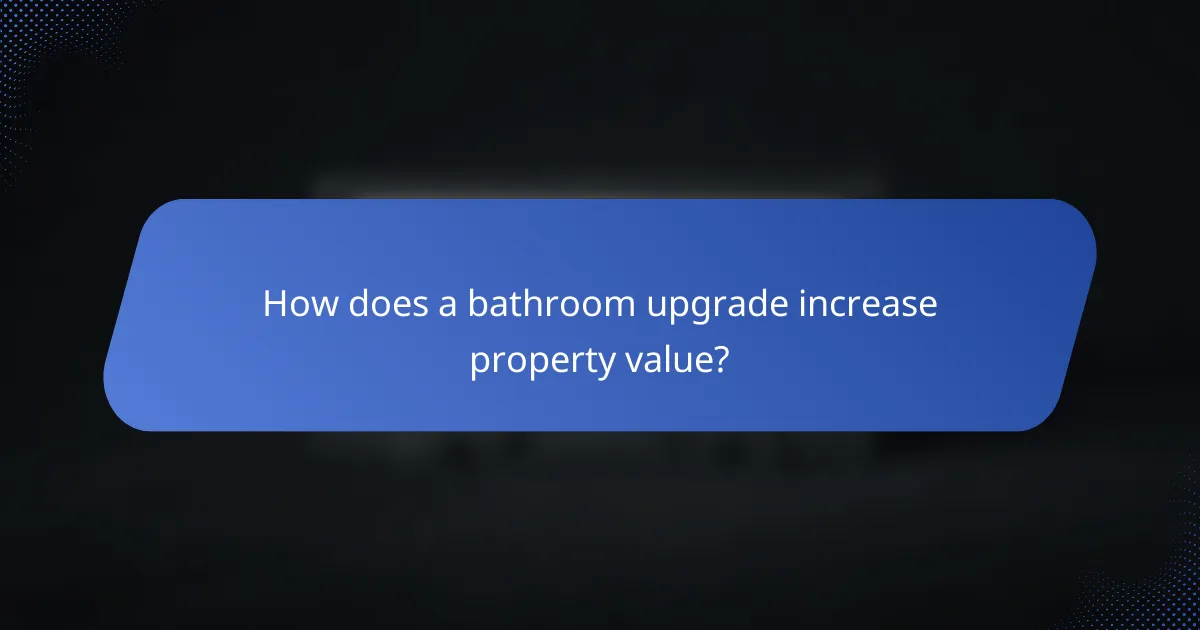
How does a bathroom upgrade increase property value?
A bathroom upgrade can significantly enhance property value by modernizing the space and improving functionality. Buyers often prioritize updated bathrooms, making them a key factor in home sales and appraisals.
Return on investment statistics
Investing in a bathroom remodel typically yields a return on investment (ROI) ranging from 60% to 70%. This means that for every dollar spent, homeowners can expect to recoup a substantial portion when selling their property.
High-end upgrades, such as luxury fixtures or spa-like features, may offer lower ROI percentages but can attract buyers willing to pay a premium for enhanced comfort and aesthetics.
Market demand for updated bathrooms
The real estate market increasingly favors homes with modern, updated bathrooms. Many buyers view these spaces as essential, often prioritizing them over other areas of the home.
Trends show that homes with renovated bathrooms tend to sell faster than those with outdated designs, reflecting a strong demand for contemporary features and efficient layouts.
Impact on home appraisal
Bathroom upgrades can positively influence home appraisals, as appraisers consider the condition and appeal of bathrooms when determining property value. A well-designed, functional bathroom can lead to higher appraisal values compared to homes with dated or poorly maintained bathrooms.
To maximize appraisal benefits, focus on quality materials and finishes that align with current market trends, ensuring the upgrades appeal to potential buyers and appraisers alike.

What are the key criteria for selecting bathroom materials?
When selecting bathroom materials, focus on durability, maintenance requirements, water resistance, and eco-friendliness. These criteria will help ensure your bathroom upgrade enhances comfort, increases property value, and maintains a modern design.
Durability and maintenance
Durability is crucial for bathroom materials, as they must withstand moisture and frequent use. Opt for materials like porcelain tiles or quartz countertops, which are known for their longevity and resistance to wear.
Maintenance is another key factor; choose materials that are easy to clean and require minimal upkeep. For example, acrylic shower surrounds are easier to maintain than traditional tile, which may need regular grout cleaning.
Water resistance ratings
Water resistance ratings indicate how well materials can handle moisture without degrading. Look for materials with high ratings, such as water-resistant vinyl flooring or treated wood, to prevent mold and mildew growth.
Commonly used materials like ceramic tiles and glass are naturally water-resistant, making them excellent choices for wet areas. Ensure that any material selected is suitable for bathroom environments to maintain both aesthetics and functionality.
Eco-friendliness of materials
Choosing eco-friendly materials can contribute to a sustainable bathroom upgrade. Look for products made from recycled materials or those that have low volatile organic compounds (VOCs), which can improve indoor air quality.
Examples of eco-friendly options include bamboo flooring and recycled glass tiles. These materials not only reduce environmental impact but can also enhance the modern design of your bathroom.

What are the costs associated with a bathroom upgrade in the UK?
The costs of a bathroom upgrade in the UK can vary widely based on factors such as size, materials, and complexity of the project. Homeowners typically spend anywhere from £3,000 to £10,000 or more, depending on the desired level of luxury and customization.
Average renovation costs
On average, a basic bathroom renovation in the UK may cost around £3,000 to £5,000. For mid-range upgrades that include better fixtures and finishes, costs can rise to between £5,000 and £8,000. High-end renovations, which may involve custom designs and premium materials, can exceed £10,000.
It’s essential to budget for unexpected expenses, which can add an additional 10-20% to your total costs. Planning for contingencies ensures that you can handle any surprises during the renovation process.
Cost breakdown by materials
Material choices significantly impact the overall cost of a bathroom upgrade. For example, standard ceramic tiles may cost around £20 to £30 per square meter, while high-end natural stone tiles can range from £50 to £100 per square meter. Similarly, basic fixtures like sinks and toilets can start at £100, while designer options may reach £500 or more.
When selecting materials, consider durability and maintenance costs. Investing in higher-quality materials may lead to lower long-term expenses due to reduced wear and tear.
Potential financing options
Homeowners looking to finance their bathroom upgrade have several options, including personal loans, credit cards, and home improvement loans. Personal loans typically offer fixed interest rates and can be a good choice for larger projects.
Another option is to use equity from your home, which may provide lower interest rates. However, this involves taking on additional debt secured against your property, so it’s crucial to evaluate your financial situation before proceeding.
